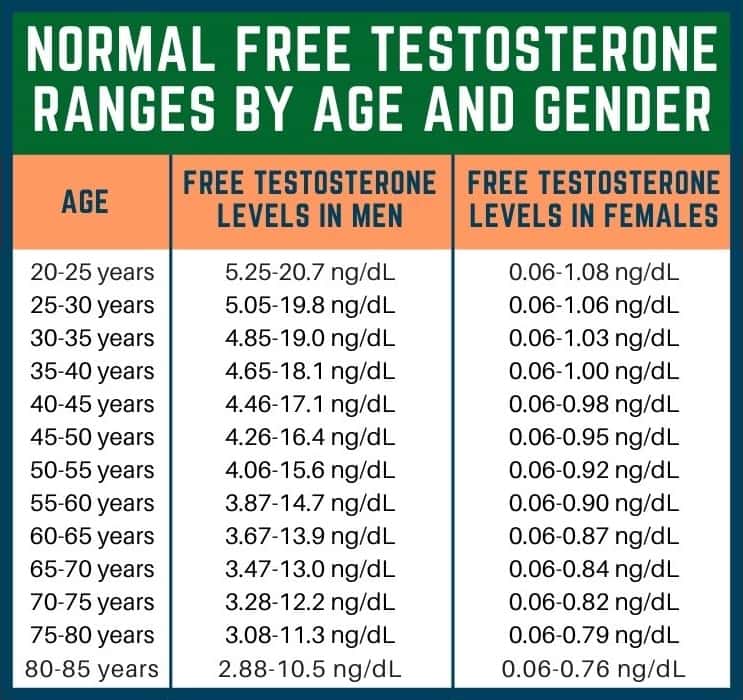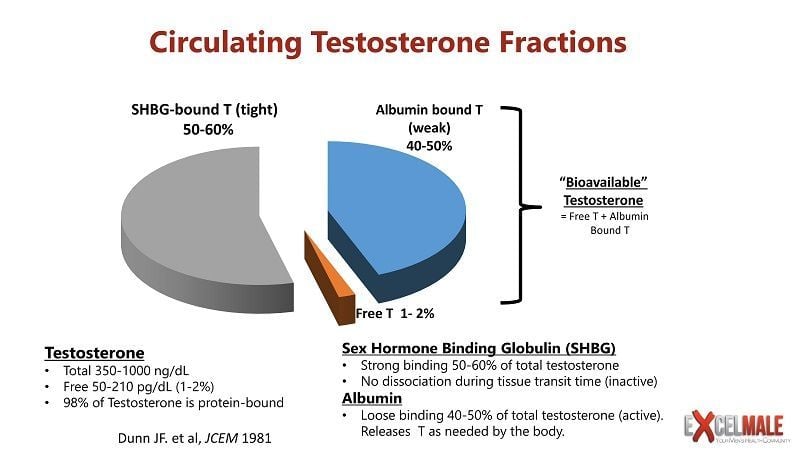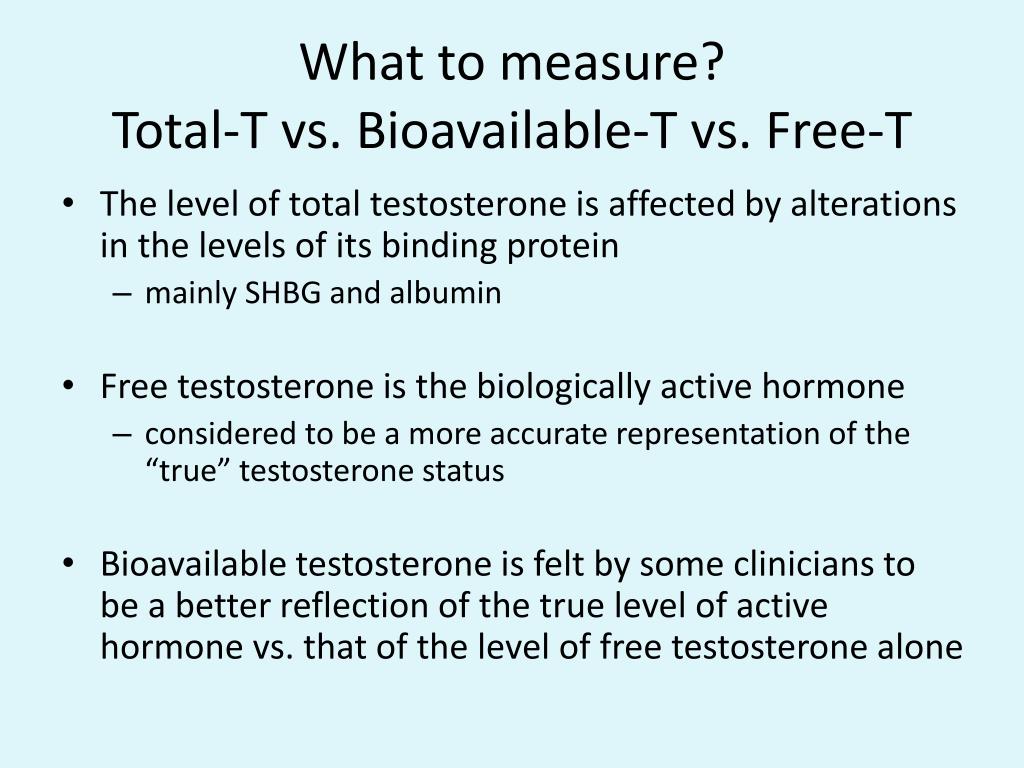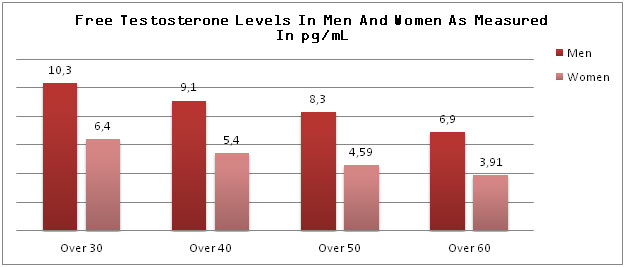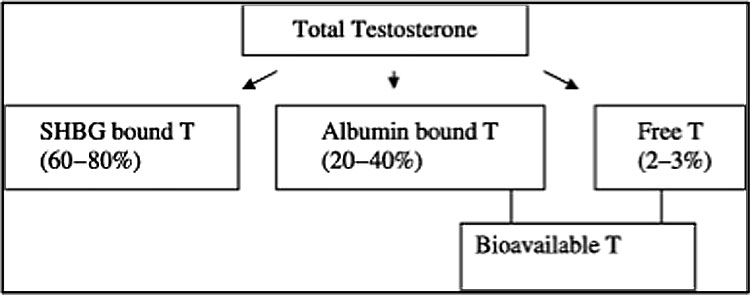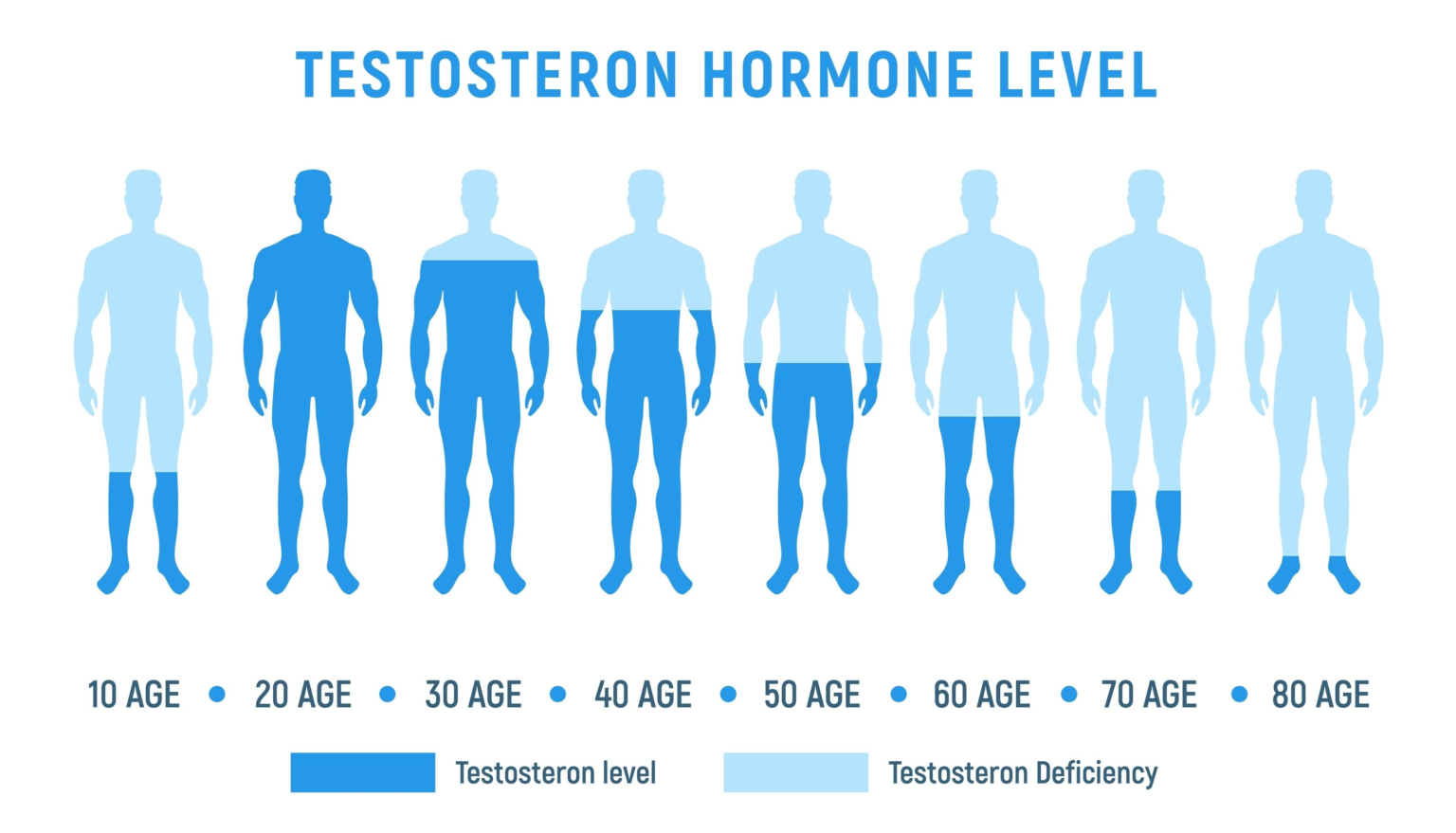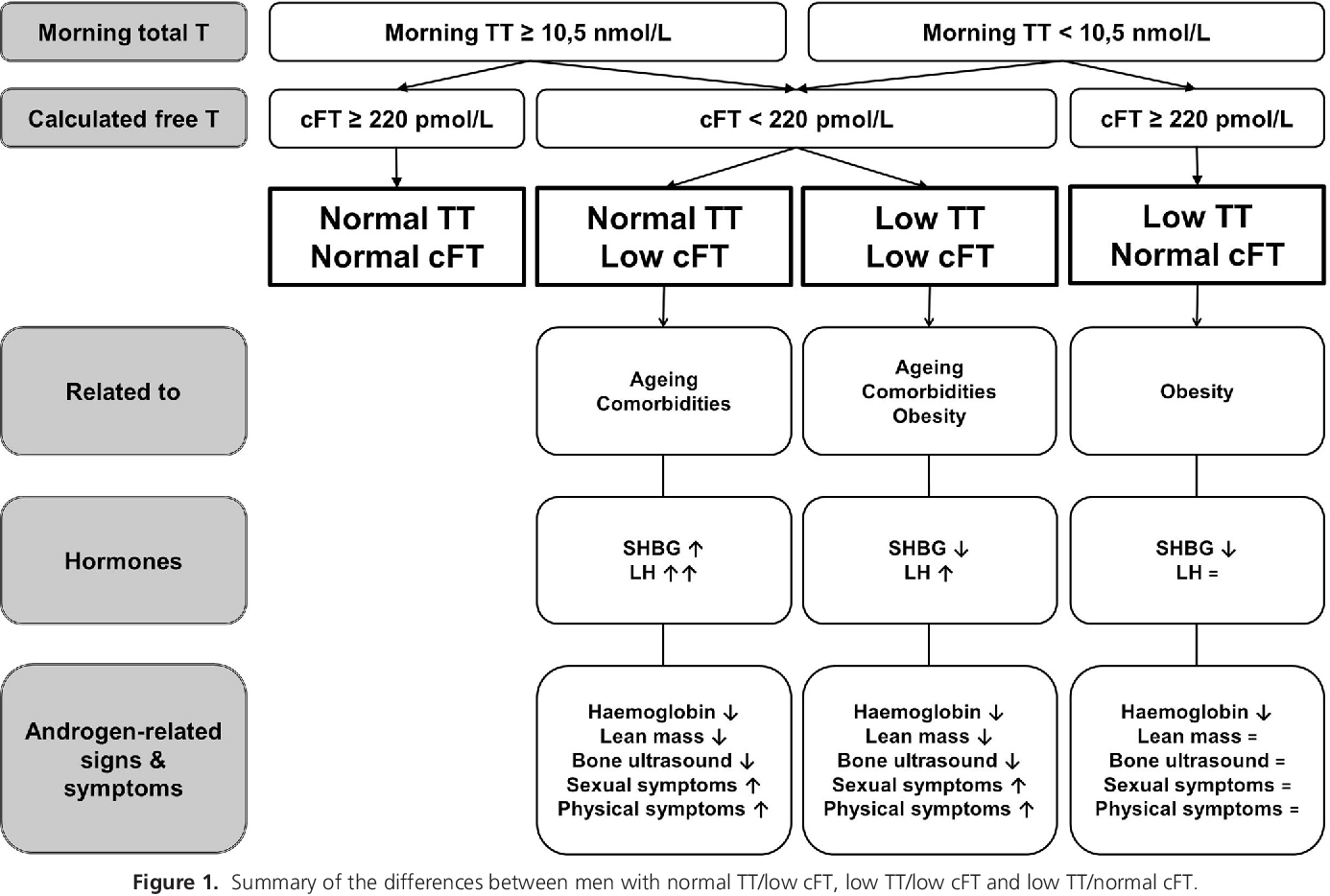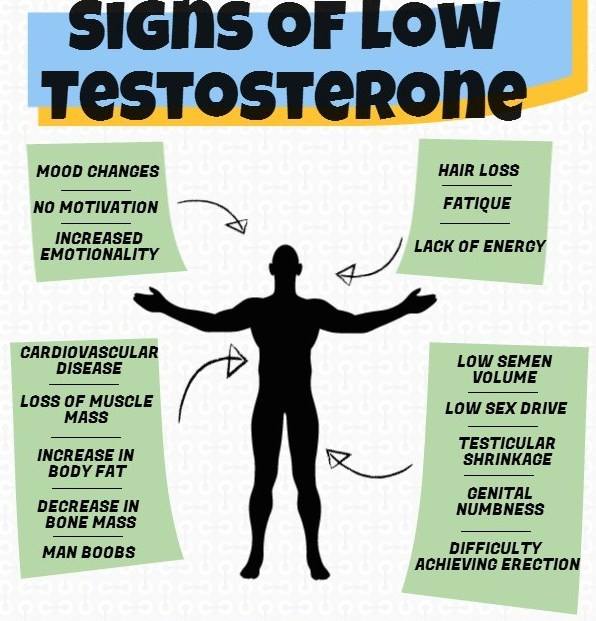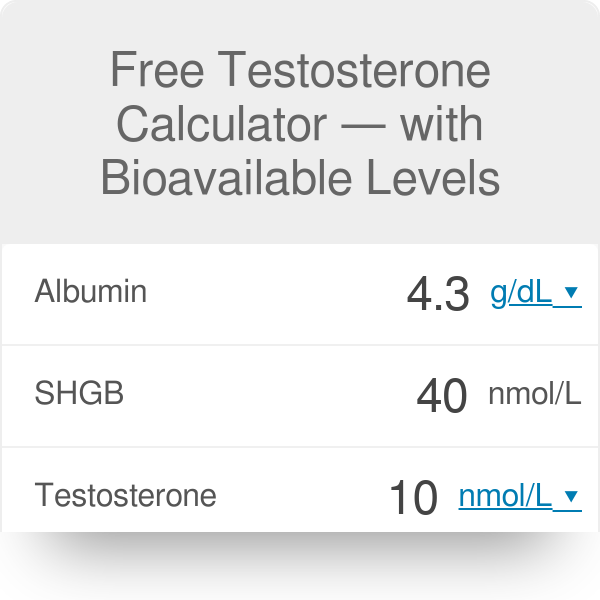Normal Testosterone But Low Free Testosterone

Many men undergoing routine blood tests may be surprised to learn they have normal total testosterone levels but low levels of free testosterone, the bioavailable portion of the hormone crucial for various bodily functions. This seemingly contradictory result is generating increased discussion among medical professionals and raising questions about the accuracy and relevance of relying solely on total testosterone measurements.
While total testosterone tests are commonly used to assess male hormone levels, a growing body of evidence suggests that free testosterone, the unbound and readily usable portion, may be a more accurate indicator of androgen deficiency symptoms. This article explores the significance of this discrepancy, the factors contributing to it, and its potential implications for diagnosis and treatment.
The Testosterone Landscape: Total vs. Free
Total testosterone refers to the total amount of testosterone present in the blood, including the testosterone bound to proteins like sex hormone-binding globulin (SHBG) and albumin. Only a small fraction, approximately 1-4%, circulates freely and is readily available for use by the body's tissues.
This free testosterone is considered the active form of the hormone, directly influencing muscle mass, bone density, libido, energy levels, and cognitive function. When SHBG levels are high, more testosterone binds to it, leaving less free testosterone available, even if the total testosterone level is within the normal range.
Factors Influencing Free Testosterone Levels
Several factors can influence SHBG levels and, consequently, free testosterone. These include age, obesity, thyroid disorders, liver disease, certain medications (such as oral contraceptives and anti-seizure drugs), and genetic predisposition.
For instance, as men age, SHBG levels tend to increase, leading to a decrease in free testosterone even if total testosterone remains stable. Obesity is also a significant factor, as excess body fat can increase aromatase activity, converting testosterone into estrogen, which in turn stimulates SHBG production.
The Significance of the Discrepancy
The discrepancy between normal total testosterone and low free testosterone poses a diagnostic challenge. Many men experiencing symptoms of androgen deficiency, such as fatigue, decreased libido, and erectile dysfunction, may have normal total testosterone levels, leading to misdiagnosis or delayed treatment.
Simply relying on total testosterone measurements can mask underlying issues with testosterone bioavailability. This can result in men being denied appropriate treatment, despite experiencing significant symptoms that impact their quality of life.
Diagnostic Approaches and Treatment Considerations
Experts increasingly recommend measuring free testosterone, or calculating it using total testosterone, SHBG, and albumin levels, when evaluating men for androgen deficiency. This provides a more comprehensive assessment of testosterone bioavailability.
Calculating free testosterone can be achieved using online calculators or laboratory assays. Some clinicians advocate for direct measurement of free testosterone, though the accuracy of these assays can vary.
Treatment options for low free testosterone may include lifestyle modifications, such as weight loss and exercise, as well as testosterone replacement therapy (TRT). The decision to initiate TRT should be made on a case-by-case basis, considering the patient's symptoms, medical history, and potential risks and benefits.
Controversies and Ongoing Research
The optimal approach to diagnosing and treating low free testosterone remains a subject of ongoing debate. Some medical professionals argue that symptoms should be the primary driver of treatment decisions, regardless of hormone levels.
Others emphasize the importance of objective measurements and caution against over-treating individuals with mild symptoms or borderline hormone levels. Further research is needed to establish clear guidelines for diagnosing and managing low free testosterone.
The Role of Sex Hormone-Binding Globulin (SHBG)
Understanding SHBG is crucial to interpreting testosterone levels. SHBG is a protein that binds to testosterone and other sex hormones, limiting their availability to tissues. Factors that increase SHBG, such as aging and certain medical conditions, can effectively lower free testosterone.
Therefore, assessment of SHBG levels, along with total testosterone, offers a more nuanced picture of androgen status.
Impact on Different Age Groups
The implications of low free testosterone can vary across different age groups. In younger men, it may contribute to issues such as infertility and decreased muscle mass. In older men, it can exacerbate age-related decline in energy, libido, and cognitive function.
Understanding the age-specific consequences of low free testosterone is essential for tailored diagnosis and treatment.
Looking Ahead
The increasing awareness of the importance of free testosterone is prompting a shift in how androgen deficiency is evaluated and managed. As more research emerges, clearer guidelines are expected to emerge, leading to more accurate diagnoses and effective treatments.
Men experiencing symptoms of androgen deficiency are encouraged to discuss their concerns with their healthcare providers and request comprehensive hormone testing, including measurements of total testosterone, SHBG, and calculated or directly measured free testosterone. By advocating for thorough evaluation, individuals can ensure that they receive the appropriate care and improve their overall well-being.
